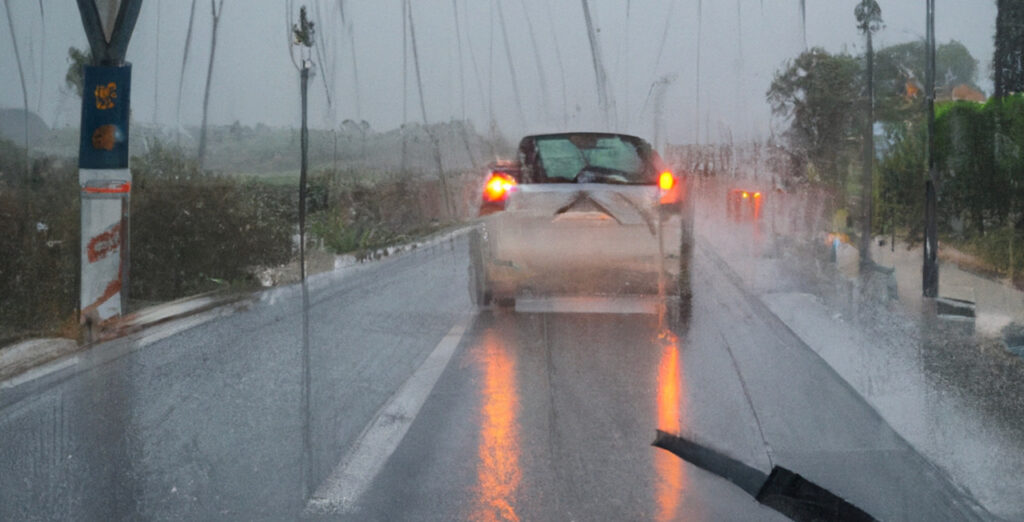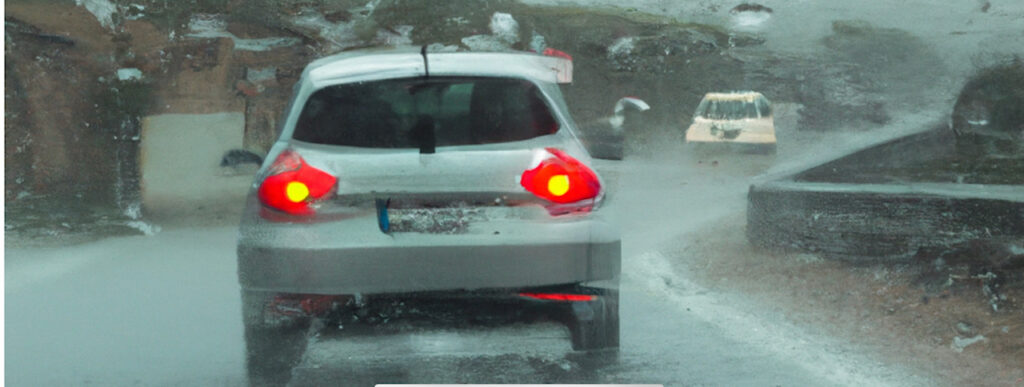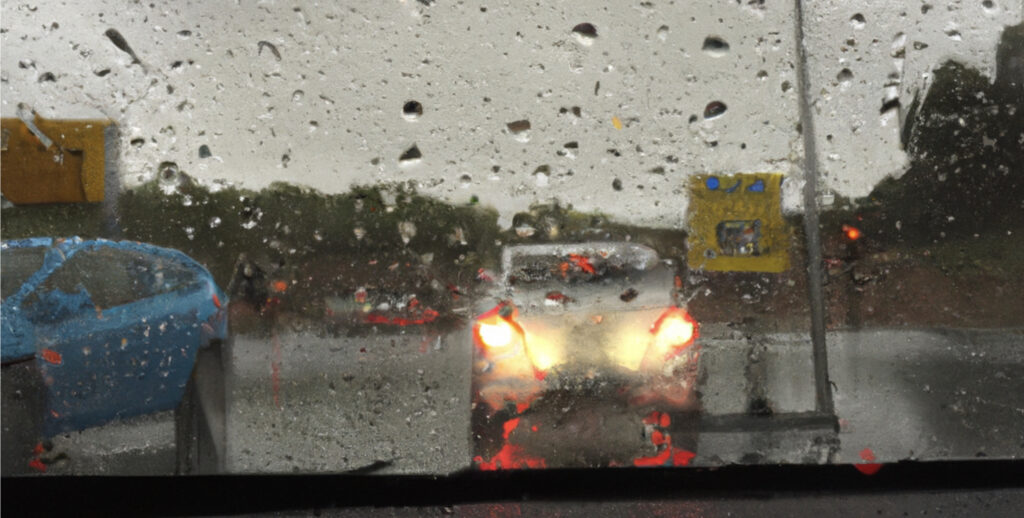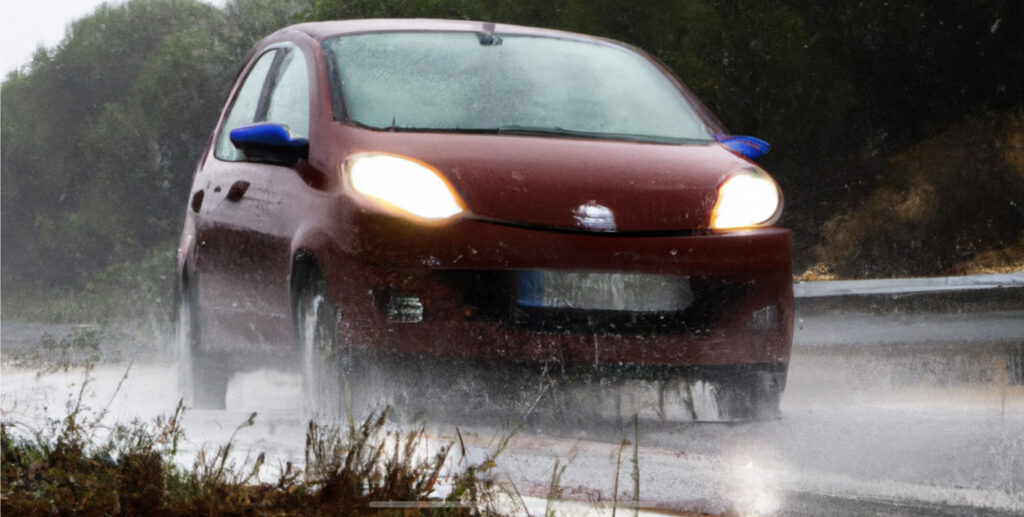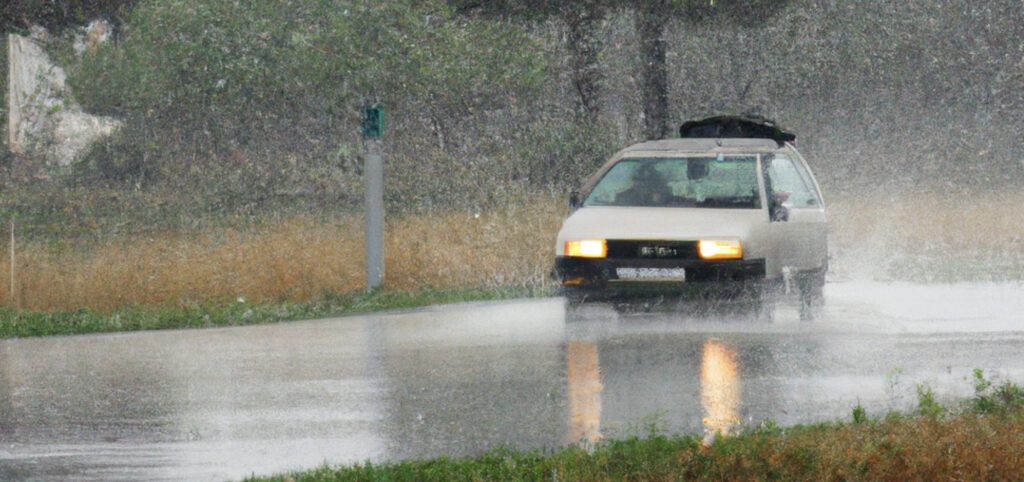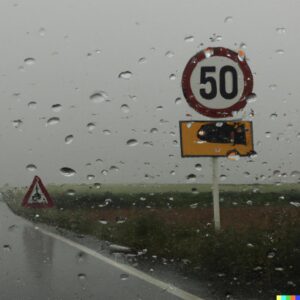
The DGT (traffic police department) has just launched a new information campaign to highlight the main changes in the Traffic Laws that will come into force on 21st March this
Road traffic safety during rain in southern Spain is an important issue for drivers, cyclists, and pedestrians alike.
Heavy rains in the region can cause flooding and slippery roads that can be dangerous for all types of travellers. For this reason, it is important to be aware of the dangers and take the necessary precautions when driving in rain.
Firstly, it is important to understand the conditions that can cause flooding. Flash floods can occur after heavy rains, and they can cause roads to become impassable. Therefore, it is important to check the weather before heading out on the road to make sure that no flooding is expected. Additionally, if flooding is a possibility, it is important to avoid driving in areas that are prone to flooding.
Secondly, it is important to drive with caution when it is raining. Wet roads can cause a loss of traction, which can make it difficult to control the vehicle. Drivers should reduce their speed and maintain a larger distance from other cars in order to reduce the risk of a crash. Furthermore, it is important to use headlights and turn on the windshield wipers to ensure visibility.
Thirdly, it is important to be aware of the dangers of hydroplaning. When a car is moving too quickly on a wet road and hits a large puddle of water you can lose control of the car and start to hydroplane. This means that the water is actually lifting the car up off the ground, causing it to slide on the water. This can be very dangerous and can cause the car to crash.
Even if you drive carefully, hydroplaning can still occur. You should take these actions if your car begins to hydroplane: Be calm and slow down.
Resist the impulse to slam on the brakes. Instead, let off the accelerator a little bit. If you need to brake, apply light pressure to the pedal, unless you have anti-lock brakes which allows you to break normally.
Avoid attempting to turn your steering wheel in the opposite direction from the direction you are slipping,
Although overcorrecting in this situation is a common reaction, the proper course of action is to gradually turn the steering wheel in the direction of your slide (this will help you regain control).
Pay attention to tyre care and maintain the correct levels of inflation and check the tread frequently. When driving in the rain or on slippery roads, avoid using the cruise control.
The sensors in your car’s cruise control system may not be as accurate, and you risk losing traction.
Fourthly, it is important to be aware of the risks that pedestrians and cyclists face during rain. Pedestrians and cyclists should wear bright colours and reflective clothing to ensure that they are visible to drivers. Additionally, they should use sidewalks and bike lanes whenever possible to reduce the risk of a crash.
Finally, it is important to be aware of the dangers of driving in foggy conditions. Visibility can be greatly reduced in foggy conditions, which can make it difficult for all types of travellers to see the road ahead. As such, drivers should reduce their speed and use their headlights to increase visibility.
Moreover, pedestrians and cyclists should use sidewalks and bike lanes to reduce the risk of a crash. By following these tips, drivers, cyclists, and pedestrians can reduce the risks associated with driving in rain in southern Spain.
It is important to remember that the risks increase in wet conditions, so it is important to use caution and be aware of the dangers. According to the most recent statistics from the Spanish Ministry of the Interior, there were 5,644 road accidents in Spain in 2019 that were attributed to rain. Of these accidents, 1,688 resulted in fatality and 3,956 resulted in injuries.
year to hopefully further improve road safety in Spain and discourage such recklessness.
With the hashtag #NuevosTiemposNuevasNormas their media campaign will focus on seven of the most important changes introduced which include 6 points on your license instead of 3 if caught using a mobile ‘phone, even if you’re just holding it, even for the GPS function!
Not using the seat belt, child restraint systems and other protection elements or not doing so properly will cost you 4 points.
Throwing objects that can cause fires or accidents on the road or in its vicinity entails the loss of 6 points.
To overtake a bicycle or a moped, you must do so by completely occupying the adjacent lane on roads with 2 or more lanes in each direction. On single lane roads, you will have to maintain the minimum lateral separation of 1.5 meters or you will lose 6 points.
Pedestrians now finally have right of way over vehicles in crosswalks, on sidewalks and in pedestrian zones.

